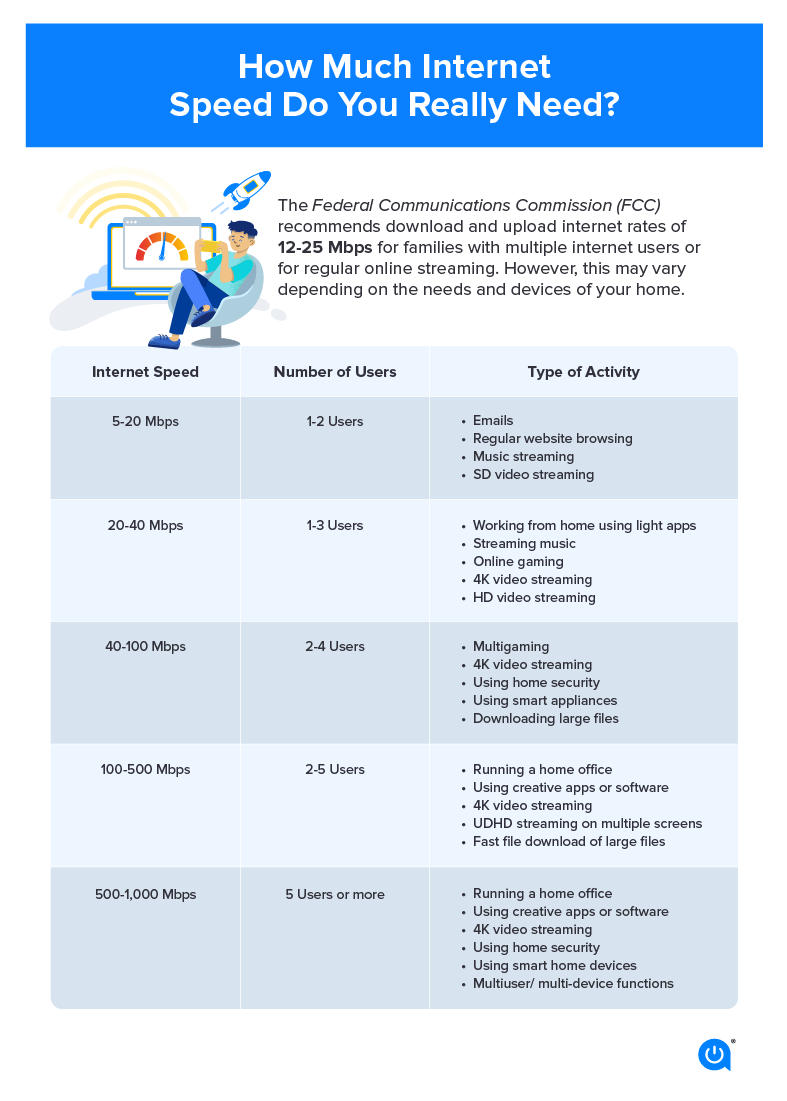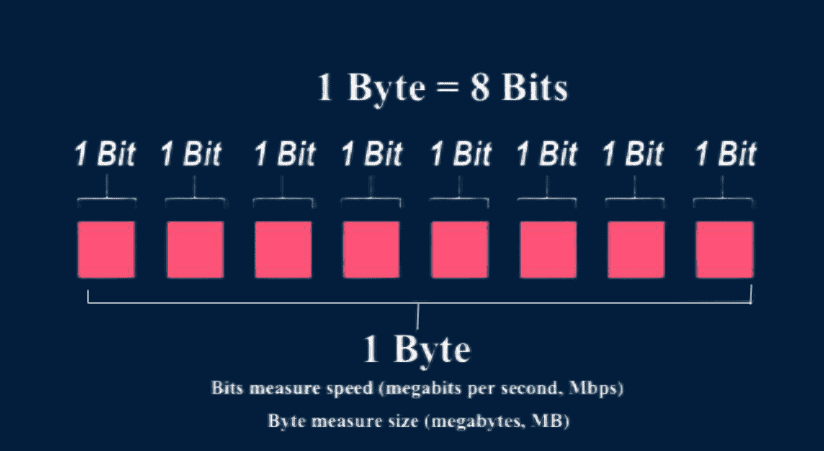Demystifying Megabits Per Second: What Customers Need to Know
Demystifying Megabits Per Second: What Customers Need to Know
Blog Article
Just How Megabits Per Second Impact Your Online Activities
The principle of megabits per second (Mbps) plays an essential role fit our on the internet experiences. As digital activities multiply, understanding the effects of Mbps on video, streaming, and pc gaming conferencing becomes increasingly essential. Greater Mbps can boost efficiency and reduce disturbances, while poor rates might foster aggravation and inefficiency. Assessing your house's specific demands in connection with these rates is vital, specifically as several gadgets try transmission capacity. Yet, the nuances of just how Mbps influences various online activities warrant more expedition, especially as our dependence on digital connection continues to advance.
Recognizing Megabits Per Second
When thinking about web rate, it's vital to recognize the principle of megabits per second (Mbps), which functions as a conventional measurement for information transfer rates. This statistics quantifies just how much data can be transferred over a net connection in one second, supplying a clear understanding of performance capabilities - Megabits Per Second. For context, one megabit is equivalent to one million little bits, and Mbps is typically used to reveal transmission capacity for numerous on the internet tasks
A greater Mbps shows a quicker internet connection, enabling customers to do tasks such as downloading and install documents, browsing web sites, and taking part in on-line gaming much more effectively. Normal surfing requires around 1-5 Mbps, while streaming high-definition video may require 5-25 Mbps. Recognizing these needs is critical for determining the suitable web rate required for certain activities.
Additionally, the number of tools connected to a network can affect general performance. Numerous individuals streaming, pc gaming, or downloading simultaneously can strain offered bandwidth, leading to slower speeds - Megabits Per Second. Reviewing personal online habits and needs is essential in choosing a net plan that straightens with one's requirements, ensuring a seamless digital experience
Streaming and Buffering Issues
Streaming high-definition content has ended up being a staple of modern on the internet home entertainment, yet it is commonly accompanied by frustrating buffering issues. These interruptions can substantially diminish the seeing experience, leading to discontentment and prospective loss of target market engagement. Buffering occurs when the information transmitted from the streaming solution is not received swiftly enough to preserve a smooth playback, frequently due to not enough net rate determined in megabits per second (Mbps)

Additionally, real-time streaming can be affected by network congestion, which happens when numerous tools share the exact same transmission capacity. Optimizing connection rate and ensuring ample Mbps is vital for a seamless streaming experience. As streaming solutions continue to evolve, understanding the influence of Mbps on buffering problems remains essential for customers seeking undisturbed enjoyment.
Online Video Gaming Efficiency
The influence of web moved here speed on online activities prolongs beyond streaming, substantially influencing on the internet pc gaming performance. In competitive video gaming, low latency and high bandwidth are vital for a seamless experience. A quick connection reduces lag, permitting players to respond promptly to in-game occasions, which can be the distinction between success and loss.
Bandwidth, measured in megabits per second (Mbps), plays a crucial role in sustaining numerous devices and video gaming systems all at once. Not enough data transfer can bring about dropped connections or minimized game quality, adversely affecting gameplay. On the internet multiplayer video games call for substantial data transfer, specifically during peak video gaming hours when countless gamers are online.
Busy first-person shooters require greater speeds to keep responsiveness, while turn-based strategy games may operate fairly well on reduced speeds. As on the internet video gaming continues to progress, with raising visual fidelity and more complex multiplayer environments, the need for higher Mbps will just intensify.
Video Clip Conferencing High Quality
In today's digital landscape, video clip conferencing high quality is heavily influenced by net rate, particularly in regards to data transfer and latency. Top notch video calls call for enough bandwidth to transmit sound and video clip information flawlessly. Generally, a minimum of 1.5 Mbps upload and download rates is suggested for standard meaning video clip, while high-def video clip conferencing normally requires at the very least 3 Mbps.
Latency, or the hold-up between sending and obtaining information, likewise plays a crucial role in the customer experience. Higher latency can lead to echo, lag, and disjointed interactions, which can impede cooperation and interaction during conferences.
In addition, multiple individuals in a video clip seminar can stress offered bandwidth, requiring even greater speeds. Network congestion, commonly brought on by go simultaneous tasks like streaming or downloading, can better deteriorate video high quality. Therefore, for companies relying upon video conferencing for remote collaboration, recognizing the connection between megabits per total and second interaction quality is crucial for keeping performance and improving online communications.
Picking the Right Net Plan
Picking an appropriate web plan is crucial for making certain optimal performance in different on the internet tasks, particularly in settings that require high bandwidth, such as video conferencing and online video gaming. Megabits Per Second. When thinking about a net strategy, it is important to assess both the rate and information allowance to match your certain usage demands
For houses with multiple customers participating in simultaneous tasks, a strategy providing greater megabits per second (Mbps) is advised. Typically, a minimum of 25 Mbps is suitable for common streaming and browsing, while plans surpassing 100 Mbps are preferable for more extensive jobs. In addition, take into consideration the nature of your online tasks; video conferencing requires at least 1.5 Mbps submit speed, while on-line pc gaming may need a reduced latency but regular link.
Unlimited information strategies can prevent strangling and disturbances, specifically if hefty use is prepared for. By attentively picking a web plan tailored to your needs, you can improve your on the internet experience, making sure smooth, nonstop accessibility to your recommended activities.
Conclusion
In verdict, the relevance of megabits per second (Mbps) in forming on-line activities can not be overstated. A thorough understanding of private or household Mbps requirements is necessary for selecting an ideal net plan that properly supports varied online activities and customer needs.

Typically, a minimum of 25 Mbps is ideal for standard streaming and browsing, while strategies exceeding 100 Mbps are better for more intensive jobs. Furthermore, think about the nature of your online activities; video conferencing requires at least 1.5 Mbps post rate, while on the official website internet video gaming may require a reduced latency however constant connection.
Report this page